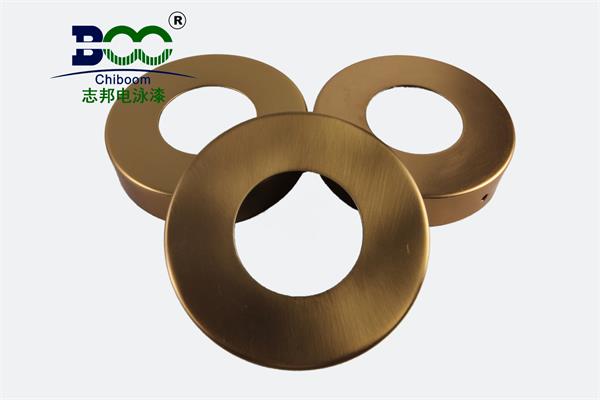Reasons for the Formation of Pinholes in Electrophoretic Paint: Unveiling the Secrets Behind Those Annoying Small Holes
In industrial production, electrophoretic paint, with its excellent anti-corrosion and anti-rust properties, has become the preferred surface treatment process for many metal products, especially auto parts and home appliance shells. It’s like giving metal a sturdy and beautiful protective coat. However, sometimes this protective coat” will have some annoying small holes, which are commonly known as pinholes. These pinholes not only affect the aesthetic appearance of the products but more seriously, they can become the starting point for corrosion, greatly reducing the protective performance of the coating and shortening the service life of the products. So, how exactly are these seemingly insignificant small holes produced? Today, let’s delve into the behind-the-scenes reasons for the formation of pinholes in electrophoretic paint.

We need to understand the basic principle of electrophoretic coating. Under the action of an electric field, electrophoretic paint swims to the surface of the workpiece and deposits to form a coating. During this process, if there are residual gases inside or on the surface of the coating, and these gases cannot escape before the coating is cured, pinholes will be formed. Therefore, factors related to gases are the primary suspects in the formation of pinholes. Pretreatment is a crucial first step. If the oil, rust, dust, and other contaminants on the surface of the workpiece are not cleaned thoroughly, it will not only affect adhesion but the contaminants themselves or the gases released during the cleaning chemical reactions may also cause pinholes. Especially in the water washing process, if the water quality is poor, containing too many dissolved gases, or if alkaline substances that are difficult to volatilize are left on the surface of the workpiece after washing, these will be brought into the electrophoretic process and become a breeding ground for pinholes. The surface design structure of the workpiece, such as the presence of deep holes, blind holes, and gaps, these places are prone to gas accumulation, and the gas is difficult to discharge during the electrophoretic process. During the operation, if the workpiece enters the tank too quickly or the distance between workpieces is too close, it may lead to uneven local electric field distribution and abnormal gas evolution. In addition, the hanging method of the workpiece before electrophoresis, if it makes some parts suspended or at an angle unfavorable for bubble discharge, may also become a high - incidence area for pinholes.
The health” state of the circulation and filtration system of the tank liquid is also crucial. The circulation and filtration system of the electrophoretic tank liquid is responsible for maintaining the uniformity and cleanliness of the tank liquid. If the circulation is not smooth, leading to uneven local components or temperature differences in the tank liquid, or if the filtration accuracy is not enough to effectively remove impurities and tiny bubbles, these will indirectly promote the formation of pinholes.
In conclusion, the formation of pinholes in electrophoretic paint is a result of the combined action of multiple factors, from pretreatment to the electrophoretic process, and then to the workpiece itself and equipment maintenance, there may be flaws in every link. To effectively solve the pinhole problem, production technicians need to be like detectives, carefully checking every possible link, accurately locating the root cause, and then treating the problem with specific measures. This may involve optimizing the pretreatment process, strengthening tank liquid management, stabilizing process parameters, improving workpiece design, or adjusting operation methods. Only by comprehensively and systematically solving these problems can we minimize or even eliminate pinholes, ensuring that the electrophoretic paint coating is both beautiful and reliable, truly providing long - term protection for the products. After all, details determine success or failure, and for us who pursue high - quality products, no pinhole can be easily overlooked.





 WeChat
WeChat